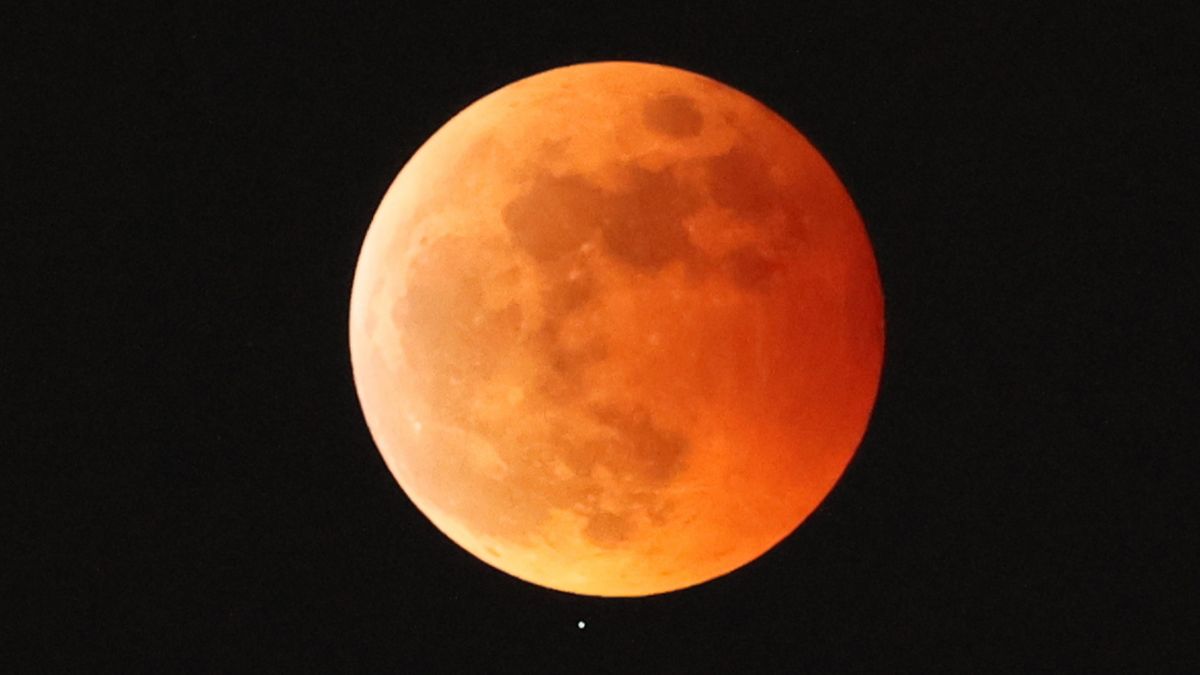A total lunar eclipse is coming to Earth for the first time since 2022. On the night of March 13-14, 2025, North America and South America will get a great view of all phases of what is commonly called a “blood moon.”
During the total lunar eclipse, which will last about five hours, the full moon will travel through Earth’s shadow and take on a striking reddish hue for 65 minutes. Unlike a total solar eclipse, which can be seen only from within a narrow path of totality, a total lunar eclipse is visible from anywhere on Earth’s night side. Overnight on March 13-14, that will include all North American time zones, including Alaska and Hawaii. Observers in Western Europe will see the moon set while still eclipsed, while in Australia and New Zealand, it will rise already in totality. (Totality refers to the period when a celestial object is fully eclipsed, as seen from Earth.)
A total lunar eclipse occurs when Earth is positioned directly between the sun and a full moon, causing the planet’s darkest shadow, its umbra, to cover the lunar surface. The moon turns red because the only light reaching it is sunlight refracted through Earth’s atmosphere, which filters out shorter wavelengths and leaves behind only long-wavelength, reddish hues. The physics is similar to what happens during sunrise and sunset.
Related: Why is the sky blue?
“Blood moon”: Phases of a lunar eclipse
The lunar eclipse will happen in five stages between 11:57 p.m. and 6 a.m. EDT (03:57 to 10:00 UTC), according to Timeanddate.com. The first stage begins when the moon moves into Earth’s fuzzy outer shadow, its penumbra, and loses its brightness. It then enters the umbra, and gradually turns reddish as the line of Earth’s shadow moves across the moon.
Totality is the phase you don’t want to miss — when the entire lunar surface will appear reddish, becoming a true “blood moon.” Halfway through that 65-minute period, the event starts to run in reverse, with the moon gradually slipping out of Earth’s umbra, then penumbra, before finally returning to its regular bright, white-gray color.
For those in eastern areas of North America, the initial partial phase of the eclipse will begin at 1:09 a.m. EDT on March 14, with totality lasting from 2:26 a.m. to 3:32 a.m. EDT. On the West Coast, the partial phase starts at 10:09 p.m. PDT on March 13, with totality occurring from 11:26 p.m. to 12:32 a.m. PDT on March 14. Because lunar eclipses are global events that occur at the same moment worldwide, these differences are merely due to time zones.
You can view the entire lunar eclipse with the naked eye, but a good backyard telescope or a nice pair of stargazing binoculars may help you better appreciate the movement of Earth’s shadow across the moon and can reveal the eclipse playing out across specific lunar structures, like large craters.
If you miss March’s total lunar eclipse, there is one more to look forward to in 2025, though North Americans will be largely left out. The following total lunar eclipse will occur overnight on Sept. 7-8 and will be best observed in Asia.
Moon quiz: What do you know about our nearest celestial neighbor?


